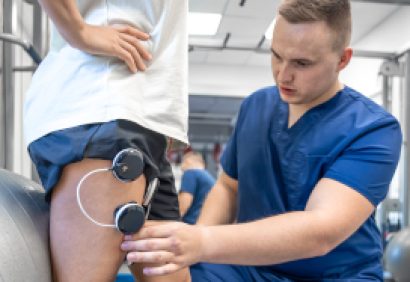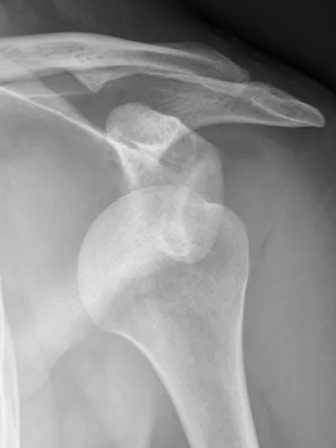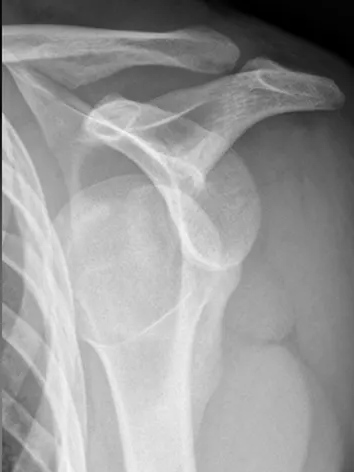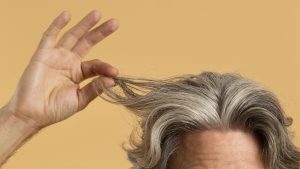Jump To:
Fast Facts
- Approximate Length of Stay: 2 Weeks
- Hospital Stay: 2-4 Days
- Operation Duration: 2-4 Hours
- Postoperative Care: Physiotherapy

Orthopedic Surgery for Sports Injuries
“Orthopaedic Surgery for Sports Injuries” focuses on the diagnosis, treatment, and prevention of injuries related to athletic activities. These surgeries are often performed to repair damaged tissues, such as bones, muscles, ligaments, tendons, and cartilage, allowing athletes to return to their sports safely and effectively.
Below are some common types of orthopaedic surgeries associated with sports injuries.
Common Sports-Related Injuries Requiring Surgery
Anterior Cruciate Ligament (ACL) Reconstruction
- Injury: ACL injuries are common in sports that involve sudden stops and changes in direction, such as soccer, basketball, and skiing.
- Surgery: ACL reconstruction involves replacing the torn ligament with a graft, typically taken from the patient’s own patellar tendon, hamstring tendon, or a donor tissue. The new ligament is then secured to the bones of the knee.
- Recovery: Rehabilitation is crucial, with a recovery time of 6 to 12 months before returning to sports.
Meniscus Repair or Meniscectomy
- Injury: The meniscus is a piece of cartilage that acts as a cushion between the thigh bone and shin bone. Tears can occur due to twisting injuries, often seen in contact sports.
- Surgery: Depending on the severity and location of the tear, the meniscus may be repaired with sutures or partially/fully removed (meniscectomy) if repair is not possible.
- Recovery: Recovery time varies, with meniscus repairs typically requiring a longer rehabilitation period than a meniscectomy.
Rotator Cuff Repair
- Injury: The rotator cuff is a group of muscles and tendons that stabilize the shoulder. Tears are common in sports that involve repetitive overhead motions, like baseball, tennis, and swimming.
- Surgery: The torn tendons are reattached to the bone using sutures and anchors. The surgery can be done arthroscopically (minimally invasive) or through open surgery.
- Recovery: Full recovery can take 6 to 12 months, with physical therapy being crucial for restoring strength and flexibility.
Labral Repair (Shoulder or Hip)
- Injury: The labrum is a ring of cartilage that surrounds the shoulder or hip joint. Labral tears can occur due to dislocation, overuse, or acute trauma, common in sports like baseball, hockey, and gymnastics.
- Surgery: The torn labrum is reattached to the bone using anchors and sutures, often performed arthroscopically.
- Recovery: Recovery typically takes 4 to 6 months, depending on the joint involved, with a gradual return to full activity.
Achilles Tendon Repair
- Injury: The Achilles tendon connects the calf muscles to the heel bone and can rupture during sports that involve sudden starts, stops, and jumping, such as basketball, soccer, and tennis.
- Surgery: The torn ends of the Achilles tendon are stitched back together. Minimally invasive techniques may be used depending on the nature of the tear.
- Recovery: Rehabilitation usually lasts 6 to 12 months, with careful progression to weight-bearing and strengthening exercises.
Cartilage Restoration Procedures
- Injury: Cartilage damage can occur due to repetitive stress or acute injuries, leading to joint pain and dysfunction, commonly seen in athletes.
- Surgery: Techniques such as microfracture, autologous chondrocyte implantation (ACI), or osteochondral grafting are used to restore damaged cartilage.
- Recovery: Recovery time depends on the extent of the damage and the procedure performed but generally ranges from 6 to 12 months.
Fracture Fixation
- Injury: Fractures (broken bones) are common in contact sports and high-impact activities, such as football, rugby, and skiing.
- Surgery: Fracture fixation involves the use of screws, plates, rods, or pins to stabilize the broken bone and allow it to heal correctly.
- Recovery: Healing time varies depending on the bone involved and the severity of the fracture but generally takes several weeks to months, followed by rehabilitation.
Shoulder Stabilization Surgery
- Injury: Recurrent shoulder dislocations or instability, often seen in contact sports, can lead to chronic pain and weakness.
- Surgery: Procedures such as the Bankart repair or Latarjet procedure stabilize the shoulder joint by repairing or reinforcing the structures that keep it in place.
- Recovery: Recovery typically takes 4 to 6 months, with an emphasis on regaining strength and preventing future dislocations.
Considerations and Recovery
- Rehabilitation: Physical therapy is a critical component of recovery from orthopaedic surgery. It helps restore strength, flexibility, and function while preventing future injuries.
- Return to Play: The timeline for returning to sports varies widely depending on the injury, surgery, and the athlete’s progress in rehabilitation. It’s essential to follow medical advice and not rush the process.
- Prevention: Post-surgery, athletes are often advised on preventive measures, such as strength training, proper technique, and using protective gear to avoid re-injury.
Choosing a Surgeon
- Experience: It’s important to choose a surgeon who specializes in sports injuries and has experience with the specific type of surgery required.
- Team Approach: Often, a multidisciplinary team including the surgeon, physical therapist, and athletic trainer will work together to guide the athlete’s recovery and return to sports.
“Orthopaedic Surgery for Sports Injuries” plays a vital role in helping athletes recover from significant injuries and return to their sport. With advances in surgical techniques and rehabilitation protocols, many athletes can return to their previous level of performance after surgery. SHIFA helps you achieve the best possible results from your surgery by utilizing the services of expert orthopedic surgeons.
Compare Before and After Images


Orthopedic Surgery for Sports Injuries
Frequently Asked
Questions
What Sports Injuries require surgery?
Femoroacetabular impingement (FAI) ,Anterior Cruciate Ligament (ACL) tears
Meniscal tears, Patellar subluxation and dislocation, Bony and soft tissue ankle impingement, Shoulder dislocations.
How long does it take to recover from a Shoulder Dislocation Surgery?
Recovering from shoulder dislocation surgery can take up to several months, depending on the type of surgery you had and how quickly you heal. Your orthopedic team will create a rehabilitation and recovery program specific to your condition.
Do we need physiotherapy after Orthopedic Surgeries?
Following your surgery physiotherapy is just as important and will help to restore the movement of your hip or knee and strengthen the surrounding muscles. Strengthening your muscles not only helps with movement, but it will also protect your joint against future injury.
Why choose SHIFA for Orthopedic Surgery?
By using the best orthopedic specialists, SHIFA provides all your surgical needs, including neck, hand, hip, and foot surgeries, etc. Also, all post-operative care needs, such as physiotherapy and high-quality rehabilitation, will be provided to you by SHIFA in the shortest possible time.
SHIFA's Departments
Related Services
Featured Services

PRP Facial Fejuvenation
“PRP (Platelet-Rich Plasma) Facial Rejuvenation”, also known as the “vampire facial,” is a cosmetic procedure that uses the patient’s own

Breast Implant Surgery
“Breast Prosthesis Surgery” commonly known as “Breast Augmentation” or “Breast Implant Surgery”, is a cosmetic procedure designed to enhance the

Facial Fillers
“Facial Fillers”, also known as “Dermal Fillers”, are injectable substances used to restore volume, smooth out wrinkles, and enhance facial

FUE
The “FUE” (Follicular Unit Extraction) hair transplant technique is a minimally invasive procedure where individual hair follicles are extracted directly
Our Blog Articles
- mehdi.mhj@gmail.com
5 Great reasons to use an online doctor to choose
Delve into the impact of digital life on mental health & discover practical strategies to...
Read More- mehdi.mhj@gmail.com
Benefits of Consulting With an Online Doctor
Uncover strategies to achieve a harmonious balance between professional and personal well-being....
Read More- mehdi.mhj@gmail.com
Doccure – Making your clinic painless visit?
Explore the benefits & challenges of virtual healthcare appointments, along with tips for making good...
Read More- mehdi.mhj@gmail.com
What are the benefits of online doctor booking
Explore importance of quality sleep & learn tips to improve your sleep, ensuring raise-up refreshed...
Read More





Comments are closed.